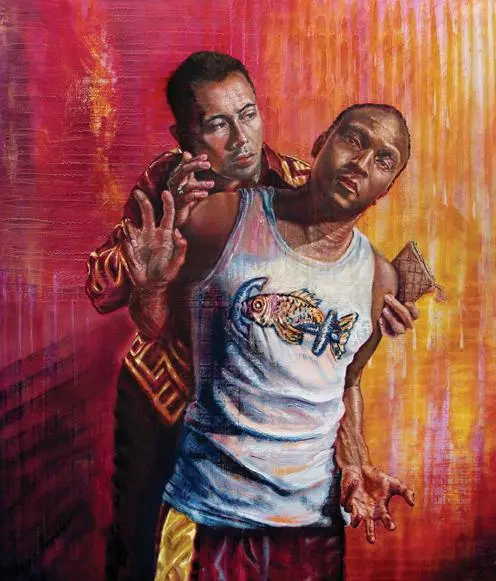The Betrayal
Judas embodies the trainer in the boxing allegory, whispering furtively what is required of the boxer in the coming match. The outcome is already decided, the boxer will take a fall in the twelfth round. The narrative elements effectively convey the sense of pre-determination surrounding the impending crucifixion of Christ.
The Betrayal highlights an interplay of opposites; the figures echo the young Dutch noble wearing a white tunic in Velazquez’s, The Surrender of Breda but are lit from a source above and to the right, throwing shadows between the two figures, giving dramatic intensity and highlighting a sense of the gulf between them. This effect of chiaroscuro, informed by Caravaggio’s passion pictures, such as the Crowning with Thorns, serves another function, however. It is the link between the representational forms of the boxer and trainer and the abstract expressionist background against which they are depicted.
This luminous surface is created through the application of glazing transparent colour and employs multi-directionally dripped paint to create a sense of pure form combined with an exploration of the effects of colour on the eye.
AWARDS:
2010 American Institute of Architects, Design & Art Award winning exhibiter, Miami, USA
2009 Faith & Form / International Awards Program, USA. Visual Arts – Winner Installation, South Sydney Uniting Church, Waterloo.
2007 Finalist & selected to travel in the 56th Blake Prize for Religious Art
 Share / Save
Share / Save







Comments 1
Say something